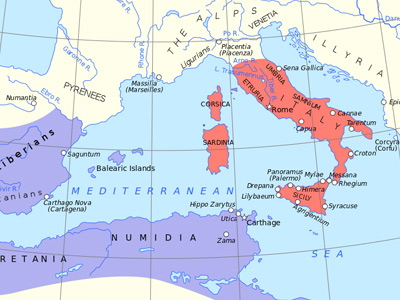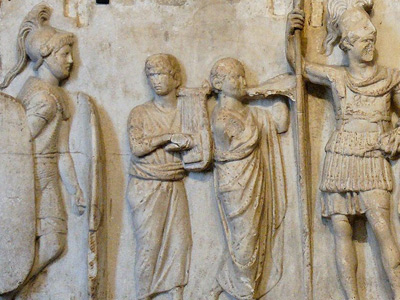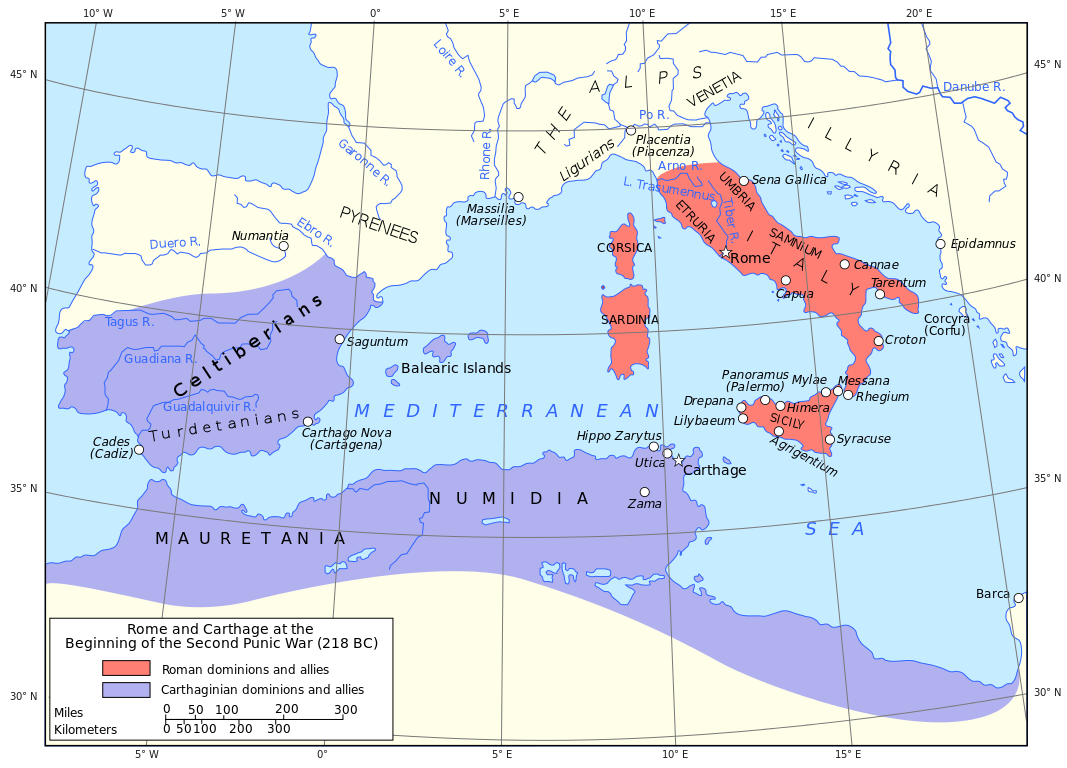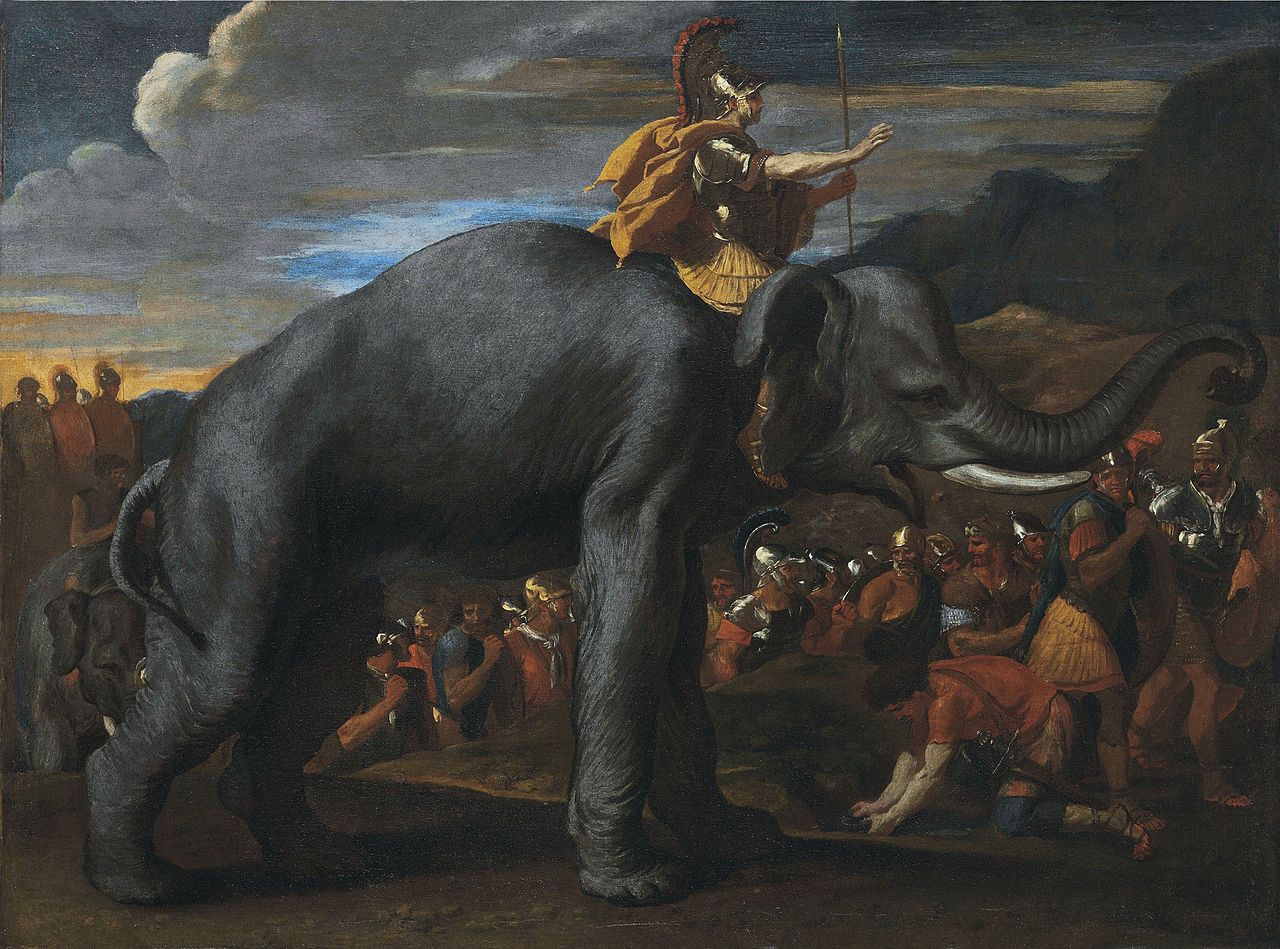Second Punic War (218-201 BC)
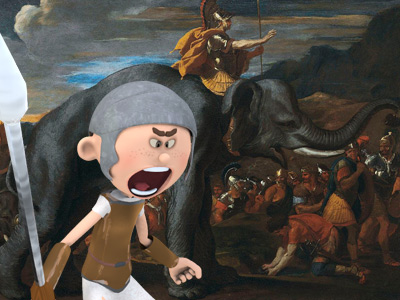
Seeking a Decisive Engagement
Fabius became unpopular in Rome, since his tactics did not lead to a quick end to the war. The Roman populace derided the Cunctator, and at the elections of 216 BC elected as consuls Gaius Terentius Varro who advocated pursuing a more aggressive war strategy and Lucius Aemilius Paullus, who advocated a strategy in the middle between the Fabian tactics and the tactics suggested by Varro.
In the campaign of 217 BC, Hannibal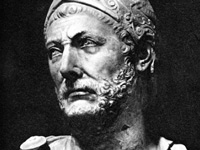 Hannibal Barca (247-183 BC), was a Carthaginian general, considered one of the greatest military commanders in history. Hannibal lived during a period of great tension in the western Mediterranean Basin, when the Roman Republic established its supremacy over other great powers such as ancient Carthage. One of his most famous achievements was at the outbreak of the Second Punic War, when he marched an army which included war elephants from Iberia over the Pyrenees and the Alps into Italy. Hannibal Barca » had failed to obtain a following among the Italics. In the spring of 216 BC, he took the initiative and seized the large supply depot at Cannae in the Apulian plain. Thus, by seizing Cannae, Hannibal had placed himself between the Romans
Hannibal Barca (247-183 BC), was a Carthaginian general, considered one of the greatest military commanders in history. Hannibal lived during a period of great tension in the western Mediterranean Basin, when the Roman Republic established its supremacy over other great powers such as ancient Carthage. One of his most famous achievements was at the outbreak of the Second Punic War, when he marched an army which included war elephants from Iberia over the Pyrenees and the Alps into Italy. Hannibal Barca » had failed to obtain a following among the Italics. In the spring of 216 BC, he took the initiative and seized the large supply depot at Cannae in the Apulian plain. Thus, by seizing Cannae, Hannibal had placed himself between the Romans The Roman Republic was a form of government of Rome and the era of the classical Roman civilization when it was run through public representation of the Roman people. Beginning with the overthrow of the Roman Kingdom (traditionally dated to 509 BC) and ending in 27 BC with the establishment of the Roman Empire, Rome's control rapidly expanded during this period - from the city's immediate surroundings to hegemony over the entire Mediterranean world. and their crucial source of supply. The Roman Senate authorised the raising of double-sized armies by the consuls Varro and Aemilius Paullus. By some estimates, the Romans raised a force as large as 100,000 men, though this figure cannot be completely validated.
The Roman Republic was a form of government of Rome and the era of the classical Roman civilization when it was run through public representation of the Roman people. Beginning with the overthrow of the Roman Kingdom (traditionally dated to 509 BC) and ending in 27 BC with the establishment of the Roman Empire, Rome's control rapidly expanded during this period - from the city's immediate surroundings to hegemony over the entire Mediterranean world. and their crucial source of supply. The Roman Senate authorised the raising of double-sized armies by the consuls Varro and Aemilius Paullus. By some estimates, the Romans raised a force as large as 100,000 men, though this figure cannot be completely validated.

Opening and decisive phase of the Battle of Cannae, 216 BC. The Carthaginian cavalry (made up of Gauls and Iberians) routed the much weaker Roman cavalry on the Roman right wing, then raced round the rear of the Roman line to attack from behind the Romans' allied Latin cavalry on the Roman left, who were already engaged with Hannibal's Numidian horse. The Latin cavalry was then destroyed. The victorious Carthaginian cavalry was then free to attack the Roman infantry line from the rear. The battle confirmed the superiority of Hannibal's cavalry, in both numbers and training, over the Roman and Latin citizen levies. From this time, the Romans relied heavily on non-Italian allied cavalry and, around the start of the 1st century BC, legionary cavalry was abolished altogether.

Opening and decisive phase of the Battle of Cannae, 216 BC. The Carthaginian cavalry (made up of Gauls and Iberians) routed the much weaker Roman cavalry on the Roman right wing, then raced round the rear of the Roman line to attack from behind the Romans' allied Latin cavalry on the Roman left, who were already engaged with Hannibal's Numidian horse. The Latin cavalry was then destroyed. The victorious Carthaginian cavalry was then free to attack the Roman infantry line from the rear. The battle confirmed the superiority of Hannibal's cavalry, in both numbers and training, over the Roman and Latin citizen levies. From this time, the Romans relied heavily on non-Italian allied cavalry and, around the start of the 1st century BC, legionary cavalry was abolished altogether
( Click image to enlarge)
The consuls Aemilius Paullus and Varro resolved to confront Hannibal and marched southward to Apulia. After a two-day march, they found him on the left bank of the Aufidus River, and encamped 10 km (6.2 mi) away. Hannibal capitalized on Varro's eagerness and drew him into a trap by using an envelopment tactic that eliminated the Roman numerical advantage by shrinking the surface area where combat could occur. Hannibal drew up his least reliable infantry in the centre of a semicircle, with the wings composed of the Gallic and Numidian horse. The Roman legions forced their way through Hannibal's weak centre, but the Libyan Mercenaries on the wings swung around their advance, menacing their flanks. The onslaught of Hannibal's cavalry was irresistible, and the cavalry commander Hasdrubal (not to be confused with Hannibal's brother who was campaigning in Iberia), routed the Roman cavalry on the Roman right wing and then swept around the rear of the Roman line and attacked Varro's cavalry on the Roman left, and then the legions, from behind. As a result, the Roman army was surrounded with no means of escape. Due to these brilliant tactics, Hannibal, with much inferior numbers, managed to destroy all but a small remnant of this force. Depending on the source, it is estimated that 50,000–70,000 Romans were killed or captured at Cannae.
As Livy notes, "How much more serious was the defeat of Cannae, than those which preceded it can be seen by the behaviour of Rome’s allies; before that fateful day, their loyalty remained unshaken, now it began to waver for the simple reason that they despaired of Roman power." During that same year, the Greek cities in Sicily were induced to revolt against Roman political control, while the Macedonian king, Philip V pledged his support to Hannibal – thus initiating the First Macedonian War against Rome. Hannibal also secured an alliance with newly appointed King Hieronymous of Syracuse, and Tarentum also came over to him around that time. Hannibal now had the resources and personnel needed to launch a successful attack on the City of Rome. However, he was uncertain of the feasibility of such an attack and spent a great deal of time pondering it. While he hesitated, the Romans were able to regroup, and the opportunity was lost. The Romans looked back on Hannibal's indecision as what saved Rome from certain defeat. The only other notable event of 216 BC was the defection of Capua, the second largest city of Italy, which Hannibal made his new base. Yet, even this defection failed to satisfy him as only a few of the Italian city-states that he had expected to gain as allies agreed to join him. Furthermore, the Macedonian navy was no match for the Roman navy, so they were unable to help him directly.
Hannibal sent a delegation to Rome to negotiate a peace and another one offering to release his Roman prisoners of war for ransom, but Rome rejected all offers.
Related Articles
First Punic War (264-241 BC)
The first of three wars fought between Ancient Carthage and the Roman Republic. For more than 20 years, the two powers struggled for supremacy, primarily on the Mediterranean island of Sicily and its surrounding waters, and also in North Africa. View First Punic War (264-241 BC) »
Second Punic War (218-201 BC)
The Second Punic War, also referred to as The Hannibalic War and (by the Romans) the War Against Hannibal, lasted from 218 to 201 BC and involved combatants in the western and eastern Mediterranean. View Second Punic War (218-201 BC) »
Third Punic War (149–146 BC)
Was the third and last of the Punic Wars fought between the former Phoenician colony of Carthage and the Roman Republic. This war was a much smaller engagement than the two previous Punic Wars and focused on Tunisia. View Third Punic War (149–146 BC) »
HISTORY
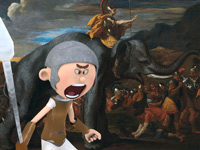
RESOURCES
This article uses material from the Wikipedia article "Second Punic War", which is released under the Creative Commons Attribution-Share-Alike License 3.0.
© Stories Preschool. All Rights Reserved.
